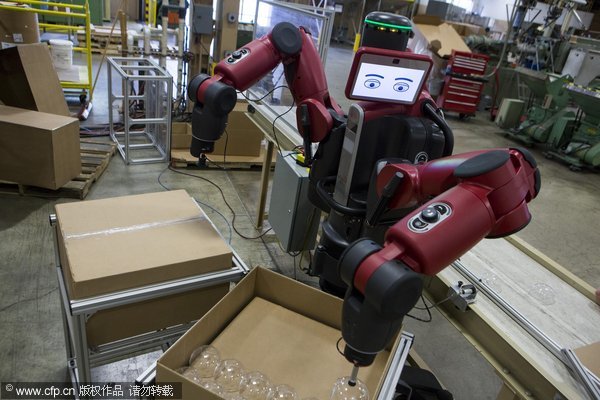

|
 |
|
A robot works at a plastic molding factory on May 9, 2013, in Hatfield, Pennsylvania. [Photo/CFP] |
The program is underway and will help at least 5,000 companies a year, a source with the investment division of the Zhejiang Economic and Information Commission told China Daily, without giving details.
Replacing humans with robots is the most effective way to tackle the labor shortage and rising labor costs, the commission said.
From 2005 to 2012, average labor costs in Zhejiang, a hub for private manufacturing enterprises, almost tripled from 14,847 yuan to 41,370 yuan a year, with an annual increase of nearly 16 percent.
In a survey conducted by the commission in May, 75 percent of respondents said rising costs were the main reason for switching to robots.
As factories used more robots, the proportion of surveyed enterprises with labor shortages dropped from 80 percent last year to 56.4 percent. The survey was based on replies from 515 enterprises that have introduced robot workers.
More than 60 percent of the enterprises surveyed have reduced production line employees by at least 10 percent, while 16 percent of the firms have cut their production jobs by more than 30 percent. Meanwhile, robot workers have helped these factories improve productivity by more than 10 percent.
If such a strategy is adopted by large enterprises throughout the province, the labor shortage will be reduced by 700,000 workers, saving 29 billion yuan in labor costs a year, the commission said.
Li Gang, president of the robotics sector in China at ABB, a leading supplier of industrial robots, said China has become a "world factory", but with increasing awareness of health and safety the manufacturing sector faces challenges in the workplace.
Photos:Robots kick off football match in Hefei